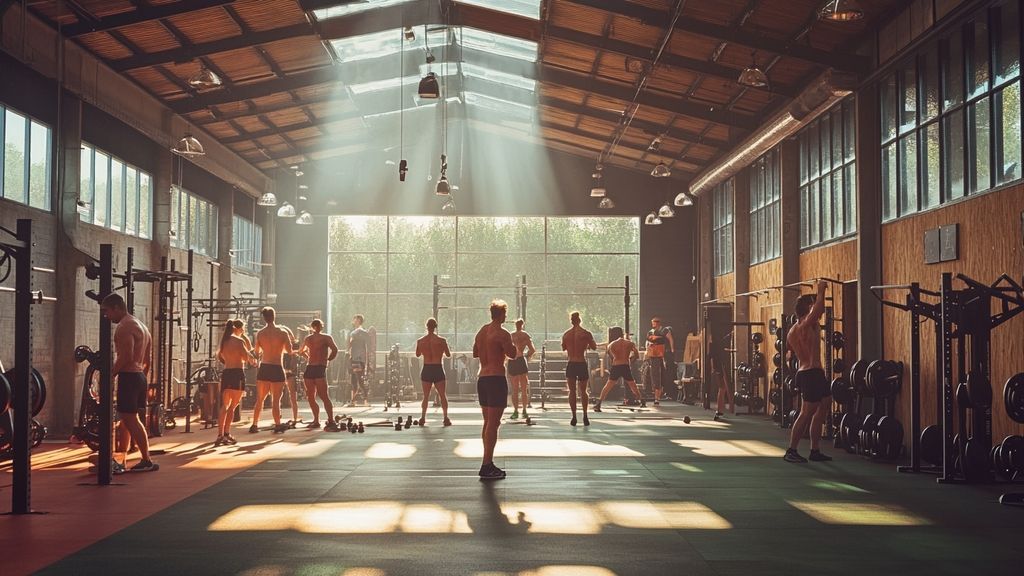Since its arrival on the fitness scene, CrossFit has sparked debates about its sustainability and overall impact on the fitness landscape. As a unique blend of high-intensity training, functional movements, and community engagement, CrossFit has drawn in a diverse following. One may wonder: is it merely a fleeting trend or a profound, lasting sport? This article seeks to unravel the complexities surrounding CrossFit, addressing its foundational strengths, community ties, and its evolving nature in the broader fitness environment.
Understanding the CrossFit Phenomenon
To grasp the essence of CrossFit, we must first understand what makes it unique. Defined as increased work capacity across broad time and modal domains, CrossFit pushes the boundaries of traditional fitness definitions. This innovative approach has effectively reshaped how enthusiasts view fitness, broadening the traditional scope to encompass various physical skills, from cardiovascular endurance to flexibility.
The core of CrossFit lies in its focus on functional fitness. By integrating movements reminiscent of daily activities—like squatting, lifting, and jumping—it prepares individuals for real-life challenges. The idea is not just to get fit but to enhance the quality of life through improved functionality.
Furthermore, the methodology promotes a structured yet adaptable training environment. One can easily scale workouts according to individual capacity, making participation accessible to all, from beginners to elite athletes. Competing in daily WODs (Workouts of the Day) fosters a motivational atmosphere, causing participants to push their limits while maintaining a supportive community.
The Evolution of CrossFit
Since its inception in the early 2000s, CrossFit has undergone significant transformations. Originating from Greg Glassman’s vision, it started as a fitness regimen for small groups but quickly exploded in popularity. The foundational elements of CrossFit—combining weightlifting, gymnastics, and cardiovascular elements—led to its rapid adoption worldwide. Now, as a dominant fitness movement, it boasts over 15,000 affiliated gyms across the globe.
This growth has not come without its challenges. Leadership changes, especially the transition to new ownership, have sparked conversations about the future direction of CrossFit. However, these changes also present opportunities for renewal and revitalization, ensuring the sport adapts to the modern fitness landscape’s demands.
The influence of CrossFit can be seen in various fitness trends. Many gyms have incorporated high-intensity functional training inspired by its principles. Programs like F45 and Orange Theory have emerged, echoing the successful elements of CrossFit’s training methodologies. This trend towards functional training indicates that the essence of CrossFit is likely embedded in the industry’s future practices.
The Community-Centric Approach of CrossFit

One of the most compelling aspects of CrossFit is its emphasis on community. Participants often form close bonds as they train together, sharing in challenges and victories alike. This communal aspect sets CrossFit apart from traditional gyms, where isolation often reigns. The collective effort, characterized by working out alongside peers, cultivates a sense of belonging and camaraderie.
CrossFit gyms, or ‘boxes’, often host community events and take part in charitable initiatives. This culture of giving back fosters connection between individuals and their communities, transcending the gym environment. Moreover, events like the CrossFit Open create a global competition, drawing participants together while showcasing their achievements in a supportive context.
The Challenge of Inclusivity
While CrossFit is recognized for its community spirit, inclusivity remains a salient point. As the movement attracted attention, concerns arose over its accessibility to various demographics, including older adults and adaptive athletes. Fortunately, CrossFit has made commendable strides towards inclusivity, ensuring modifications are available for all fitness levels.
The scalable nature of workouts allows anyone, regardless of age or physical ability, to participate meaningfully. Adaptive athletes, elite competitors, and seniors often share the same floor, progressing together toward common goals. This shared experience enriches the overall atmosphere and reinforces the notion that fitness is a lifelong journey.
Through dedicated programs catering to different age groups—such as Masters Competitions for older athletes—CrossFit continues to foster an inclusive environment. This approach is critical in proving that fitness can unite individuals from all walks of life.
The Future of CrossFit: Trends and Innovations
As CrossFit continues to evolve, several trends shape its trajectory. The rise of functional training and the demand for varied workout experiences ensure that CrossFit remains at the forefront of the fitness landscape. New platforms and technologies are emerging, allowing CrossFit to expand its reach beyond traditional gym settings.
Online coaching and digital communities have gained momentum, offering remote participants the chance to engage in CrossFit workouts from anywhere in the world. Virtual competitions enable athletes to connect and compete in real-time, bridging the gap created by geographical barriers. This innovation not only enhances inclusivity but fortifies the sense of community that defines CrossFit.
Moreover, CrossFit’s focus on mental wellness is gaining attention. By promoting mental resilience, the sport helps individuals develop discipline and coping mechanisms that transcend beyond the gym. Participants often report improved mental health and resilience through their engagement in CrossFit training, suggesting a broader impact on overall well-being.
The Global CrossFit Community
The reach of CrossFit is genuinely global. With affiliates in over 150 countries, the movement has fostered international connections among fitness enthusiasts. CrossFit events and competitions have become cultural phenomena, uniting diverse populations through shared commitments to fitness and health.
This global presence demonstrates that CrossFit transcends mere trends; it has cultivated a dedicated following. Fans don’t just engage with local boxes; they travel to participate in elite competitions, further enhancing the sense of interconnectedness.
Moreover, the inspiring stories of individuals transforming their lives through CrossFit continue to emerge, underscoring its long-term impact on personal health and community spirit. As individuals break barriers and achieve their goals, they embody the core values CrossFit promotes—perseverance, resilience, and community.
Is CrossFit Here to Stay?

The question beckons whether CrossFit is a passing trend or a sustainable sport. Evidence points toward its longevity. The sport’s innovative spirit, adaptable methodologies, and deep-rooted community connections establish a powerful case for its endurance.
CrossFit’s capacity to incorporate various training modalities and address individual needs ensures ongoing relevance. Moreover, its emphasis on inclusivity and community building fosters connections that extend beyond the gym floor.
As the fitness industry continues to evolve, CrossFit has successfully positioned itself to adapt, drawing on its foundational strengths. The testimonials from devoted practitioners indicate that they find in CrossFit not just fitness but a lifestyle—an unyielding commitment to personal growth and community.
Final Thoughts on CrossFit
Ultimately, the journey of CrossFit is about more than just physical fitness. It embodies a movement that celebrates humanity’s capability for progress, resilience, and unwavering community support. As long as there are individuals passionate about health, performance, and camaraderie, CrossFit will undoubtedly maintain its place in the fitness landscape.
